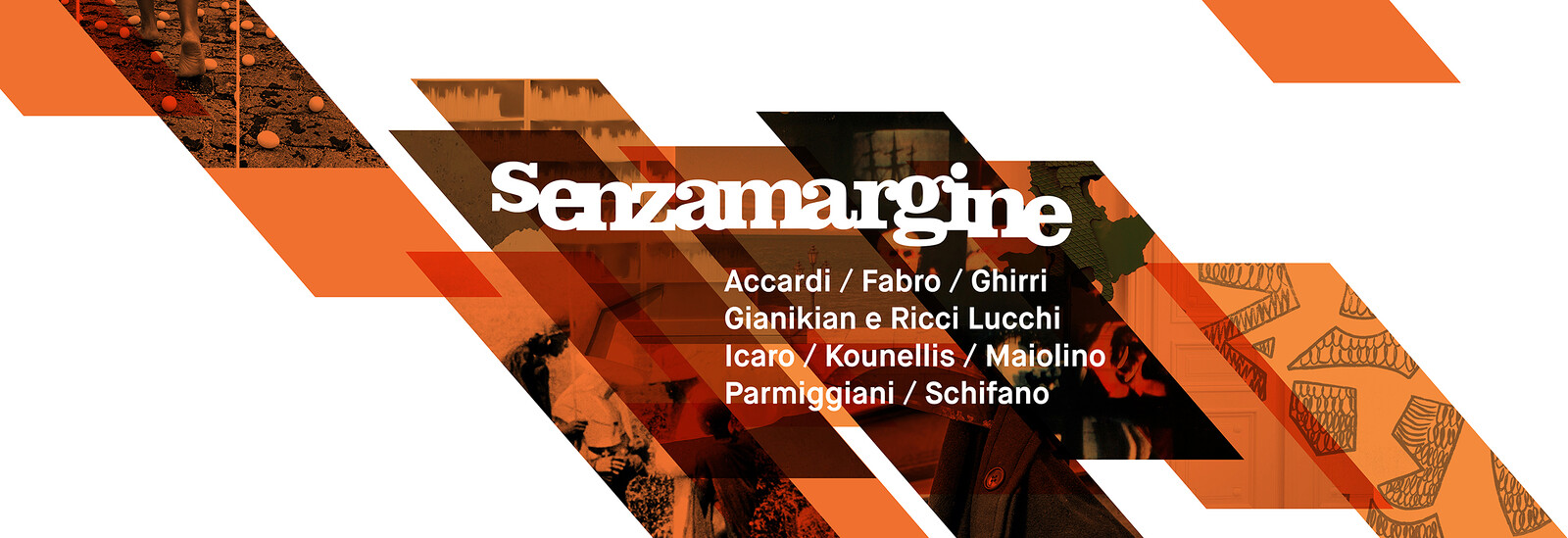Passages in Italian Art at the Turn of the Millennium
October 2, 2020–October 10, 2021
Via Guido Reni, 4/a
00196 Roma Italy
Italy
Hours: Tuesday–Sunday 11am–7pm
T +39 06 32486
press@fondazionemaxxi.it
Carla Accardi, Luciano Fabro, Luigi Ghirri, Yervant Gianikian and Angela Ricci Lucchi, Paolo Icaro, Jannis Kounellis, Anna Maria Maiolino, Claudio Parmiggiani, Mario Schifano. These nine essential masters of contemporary Italian art, still a point of reference for younger generations, are the protagonists of the homage exhibition senzamargine. Passages in Italian Art at the Turn of the Millennium, a MAXXI Arte project curated by Bartolomeo Pietromarchi, at MAXXI National Museum of XXI Century Arts from October 2, 2020 to October 10, 2021.
The works of these nine masters, which are not yet present in the Collection, will become part of it thanks to special funding from MiBACT on the occasion of the museum’s 10th anniversary and through this exhibition.
The exhibition was presented on Thursday, October 1, 2020 by Giovanna Melandri, President of Fondazione MAXXI, Hou Hanru, Artistic Director of MAXXI and Bartolomeo Pietromarchi, Director of MAXXI Arte. The presentation was attended by the Italian Minister of Cultural Heritage, Dario Franceschini.
In the year of MAXXI’s 10th anniversary, the national public collection, a collective patrimony, is still the protagonist.
Moreover, senzamargine is the culmination of a broader project dedicated to contemporary Italian creativity, again for the Museum’s 10th anniversary. Said project began in February with REAL_ITALY, the exhibition with the mid-career artists who won the first editions of the Italian Council, currently focuses on great established names and will finally direct its attention to the young talents of the MAXXI BVLGARI Prize as of October 28.
In the flexible spaces of Gallery 1, on the ground floor of the Museum, a series of “rooms” follow one another, each of which is dedicated to an artist whose large installations, important works created at the turn of the millennium, and senzamargine (meaning “boundless”) works, to paraphrase the title of the avant-garde magazine founded and directed in 1969 by Alberto Boatto, to whom an in-depth focus is dedicated in the Archive Wall, are on display. This sequence of immersive environments enhances the revolutionary force, the strength and monumentality, as well as the relationship with space, of the works, bringing out some of the themes still at the centre of artistic reflections in all their topicality.
The path opens with the “room” dedicated to Luigi Ghirri, a great master of photography famous for his original approach to the representation of landscapes. 30 photographs published in 1989 in the book Paesaggio italiano for the series I Quaderni di Lotus are on display. The places and cities are different, but all the images are lyrical and allusive, far from stereotypes and linked, as Ghirri himself wrote, “by a leitmotif that crosses themes, spaces and objects” and connects the photographs in a sort of “sentimental geography, where the itineraries are not marked and precise, but obey strange tangles of seeing.”
The second room is dedicated to Mario Schifano. In the works exhibited here (the large PVC Per Esempio, the paintings Segni and Ritracciato, the tondos Chi and Dolore) Schifano once again meditates on the anesthetising power of television, which is both a fetish and a personal obsession, by dwelling on the constant exposure to an overdose of images increasingly emptied of meaning.
Two works by Luciano Fabro, one of the most famous figures of Arte Povera, are on display: Enfasi (Baldacchino) and Italia all’asta. Enfasi—a sort of suspended canopy in copper and aluminium sheet, with 20 metal tondos with faces embossed on them—is reminiscent of an ancient canopy with sacred undertones. Italia all’asta belongs to one of the artist’s most famous series, Italie, a reflection on national identity begun in 1968.
The two canvases Bianco argento and Bianco argento 3 by Carla Accardi reflect the investigation into signs that accompanied the artist throughout her career, and here become simplified and geometric. The canvases dialogue with the installation Casa Labirinto, exhibited for the first time at Palazzo Doria Pamphilj in Valmontone in 2000: a Perspex parallelepiped on which Accardi traced black and grey signs.
Jannis Kounellis, a master of Arte Povera, is present in the exhibition with the powerful 2014 installation Untitled. Said installation, presented for the first time in Todi and then in London in 2014, is among the artist’s latest works. In this work, where large butcher knives tearing black coats into shreds envelop the space, Kounellis talks about the human condition and its wounds.
In Spiette (1991), set up for the first time at an environmental scale, Paolo Icaro marks the space with 36 small plaster shapes in which fragments of mirrored glass are embedded. The Spiette, which are positioned at different angles, produce a fragmentary image of the surrounding space, in which the mirroring points weave, reflection by reflection, an invisible web of glances.
Claudio Parmiggiani has created Untitled, one of his famous delocations, namely works that he creates using fire, dust, smoke and soot to reveal the silhouette of absent objects, specifically for MAXXI. One of the subjects most frequently addressed with this method is the book: a symbolic shape with a long-lasting cultural and intellectual value, but also a solid material entity with a rich formal history.
The interaction among different means of expression, which clearly emerges in the set-up proposed here and conceived for this occasion, characterises the work of Anna Maria Maiolino, an artist of Italian origin who lives and works in Brazil. A series of works reflecting the mingling of languages, among sculptures, photographs and drawings of different origins that recount the story of this artist, who is particularly committed to investigating the social role of women, is on display.
The exhibition ends with a “room” dedicated to Yervant Gianikian and Angela Ricci Lucchi, the cornerstones of research into moving images in recent decades. senzamargine is a fitting tribute to this extraordinary duo of artists, with the corpus of works Dal Polo all’Equatore, which includes a film, a large drawn roll and other works on paper.


